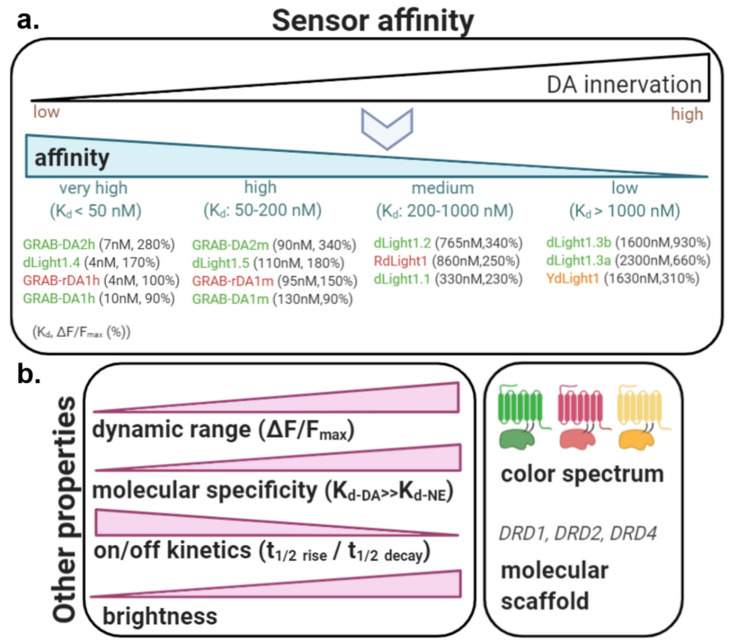Figure 5.
Sensor properties to consider for sensor choice: (a) Local dopamine (DA) levels can be a useful measure to guide sensor choice based on ligand affinity. It is generally recommended to look at sensor affinity as a first criterion and to match it with the local expected concentration of DA in the brain ROI, using high and very high affinity variants for regions with sparse innervation and medium/low affinity variants for regions with dense innervation; here we classify existing DA sensors based on their affinity category (affinity Kd and dynamic range dFFmax are noted in brackets). (b) Other sensor properties should be considered (see also Table 1 for exact values) and their relative importance will depend on the individual experimental parameters: (i) dynamic range (if possible at least 250–300%), (ii) molecular specificity (affinity for DA should be far greater than affinity for NE in brain regions with dual DA/NE innervation), (iii) on and off kinetics (should be as short as possible in assays where high temporal resolution is required), (iv) basal brightness (may not matter for fiber photometry but high brightness may improve identification of small cell compartments in 1- and 2-photon imaging), (v) color spectrum (3-colors available; important when multiplexing with opsins, sensors or photopharmacology) and (vi) molecular scaffold (3-scaffolds available; important when multiplexing with (photo)pharmacology: if drug has affinity for the DA receptor scaffold, signal may be affected; this property can however be harnessed in drug discovery experiments where sensor fluorescence can be used as a specific readout of DA receptor subtypes activation in vitro or in vivo).

